XAMPP is a fantastic tool for quickly setting up local WordPress installations to use in testing. However, like with any WordPress site, things can sometimes go wrong with your local installation. If you’re attempting to access your site’s index.php file and you’re receiving error messages, you’re not alone—this is a fairly common problem.
Fortunately, this issue is relatively easy to resolve. Plus, since we’re dealing with WordPress, there are multiple ways to go about it. So you should be able to find a solution that matches your comfort level.
In this article, we’ll explain the localhost/xampp/index.php error and its different presentations. Then we’ll walk through two methods to fix it.
Let’s dig in!
An Introduction to XAMPP index.php Errors
The index.php error shows up when you’re attempting to access localhost/xampp/index.php in your browser. This WordPress file serves as an entry point to your website; thus, it needs to be accessible.
The error typically presents itself in one of two ways. In the first, you attempt to load the page and receive an “Object not found!” error message. The other presentation occurs when you attempt to load the page and get redirected to “localhost/dashboard”.
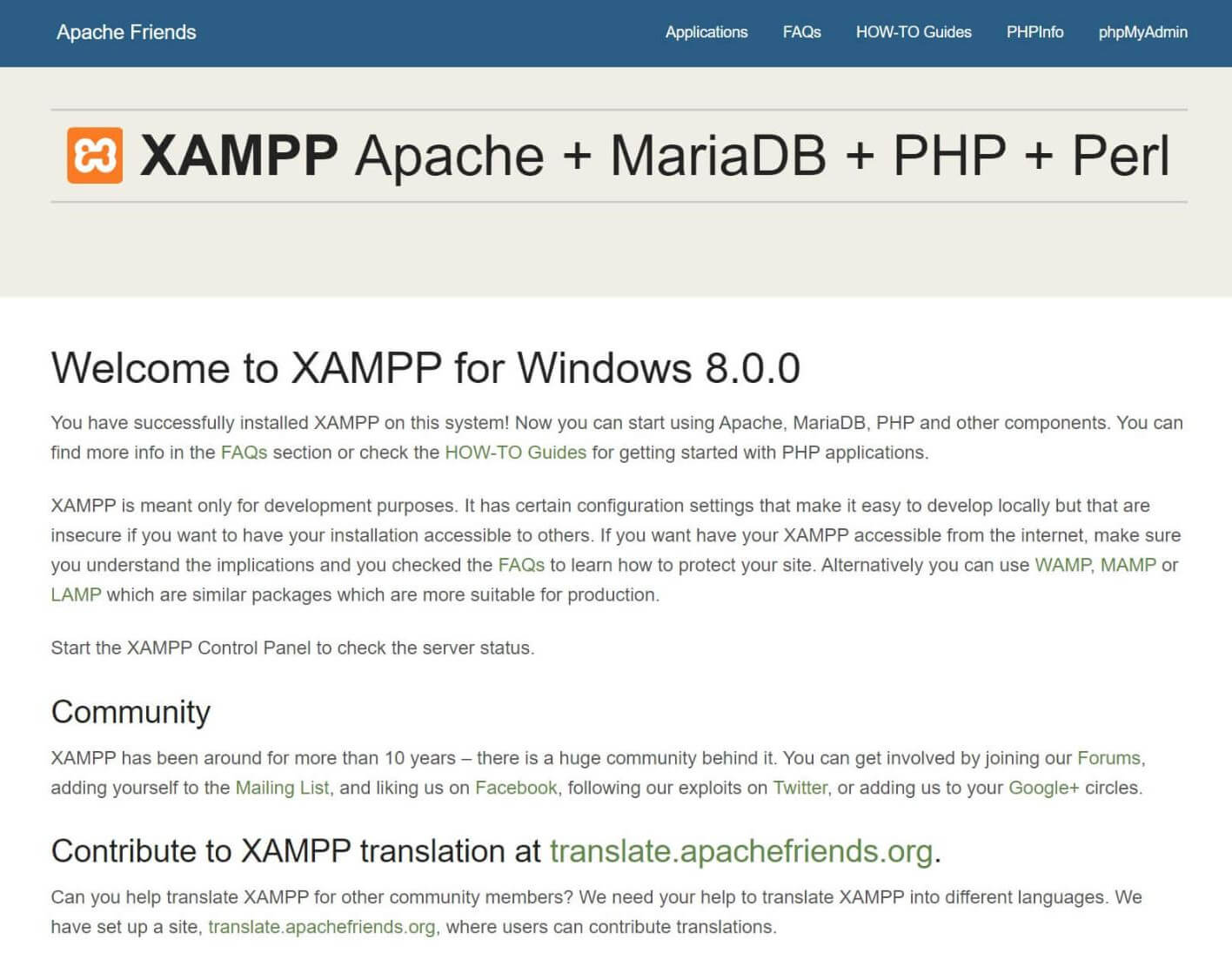
Obviously, that’s not very helpful. This group of XAMPP errors is particularly frustrating because they don’t indicate what the problem could be. Instead, things just don’t work the way you expect, and you’re left scratching your head.
However, regardless of the presentation, the end result is the same: you can’t access the page you need to do your work.
Fortunately, this issue is simple enough to fix. It stems from how XAMPP treats files in its directories, so correcting it involves adjusting those files.
How to Fix the XAMPP Localhost index.php Error (2 Methods)
There are two ways to fix this issue. The first involves switching the file extension from “.php” to “.txt”, while the second focuses on changing where your site looks for the file.
Both options are extremely simple, and either can work, so we recommend picking the solution you’re most comfortable with and giving it a try. If you still get the error at localhost/xampp/index.php afterward, you can try the second method as well.
1. Rename index.php to index.txt
This method involves changing the file extension (the short abbreviation that comes after the file name) of index.php to “.txt”. This is very easy and can be done from any file browser, and the results are normally instantaneous.
The simplest way to get to your XAMPP folder is from the XAMPP Control Panel. Open the panel from your system tray.

Click on the Explorer button on the right side of the window to open a file browser directly to the XAMPP folder.
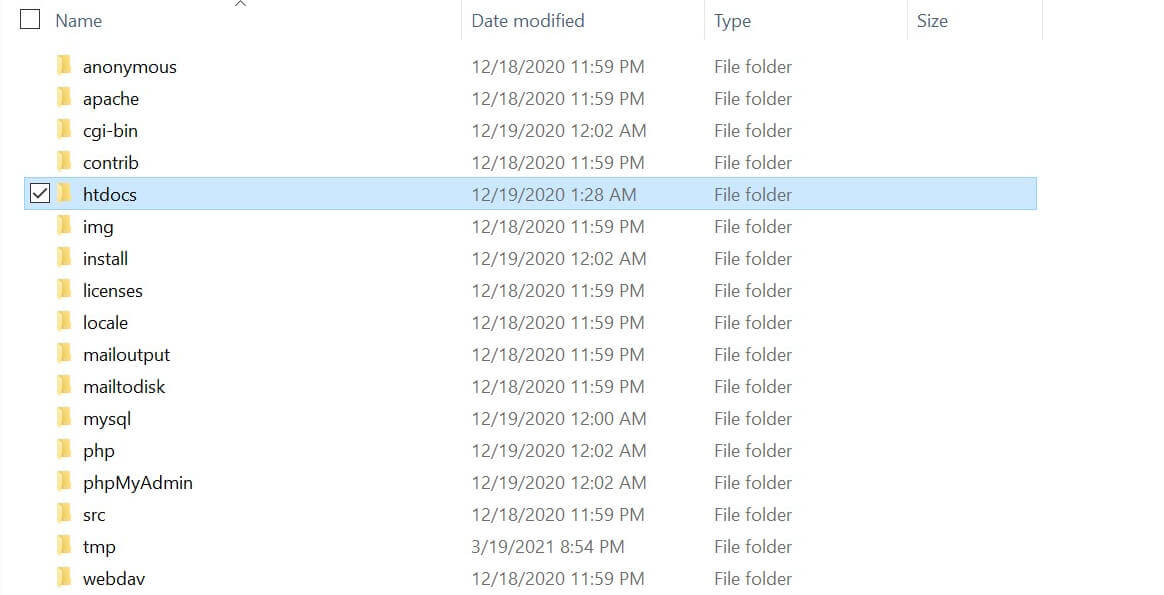
Navigate to the htdocs folder and then locate the index.php file. If you’re on Windows, it might simply say “index”. This is because file extensions are hidden by default. To correct this, click on View in the File Explorer ribbon and check the box beside File name extensions.
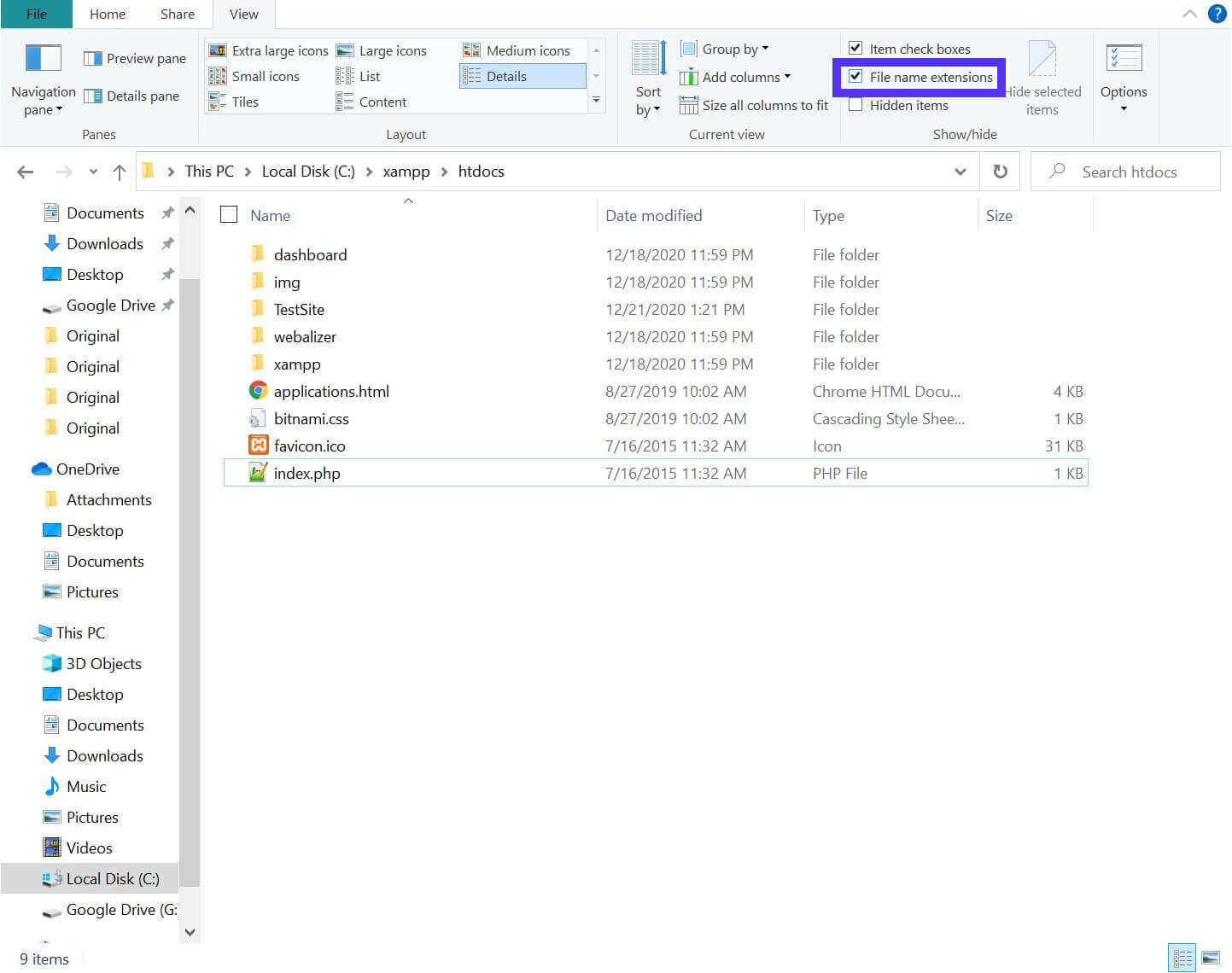
Next, right-click on the file and select Rename. Simply delete “php” and replace it with “txt”:

If you receive a prompt asking if you’re sure you want to change the file name, choose Yes. Then open a browser and try to navigate to “localhost”. You should now be presented with your list of directories.
2. Edit the httpd-vhosts.conf File
You can also resolve the localhost/xampp/index.php error by changing a single line in the file httpd-vhosts.conf. This file is important, but it’s buried several levels deep in the Apache folder in your XAMPP directory:
- On a Windows machine, the path to the file is: C:\xampp\apache\conf\extra\httpd-vhosts.conf
- On a Mac, the path is significantly different: ~/.bitnami/stackman/machines/xampp/volumes/root/etc/extra/httpd-vhosts.conf
In either case, start by opening the XAMPP Control Panel and clicking on Explorer.
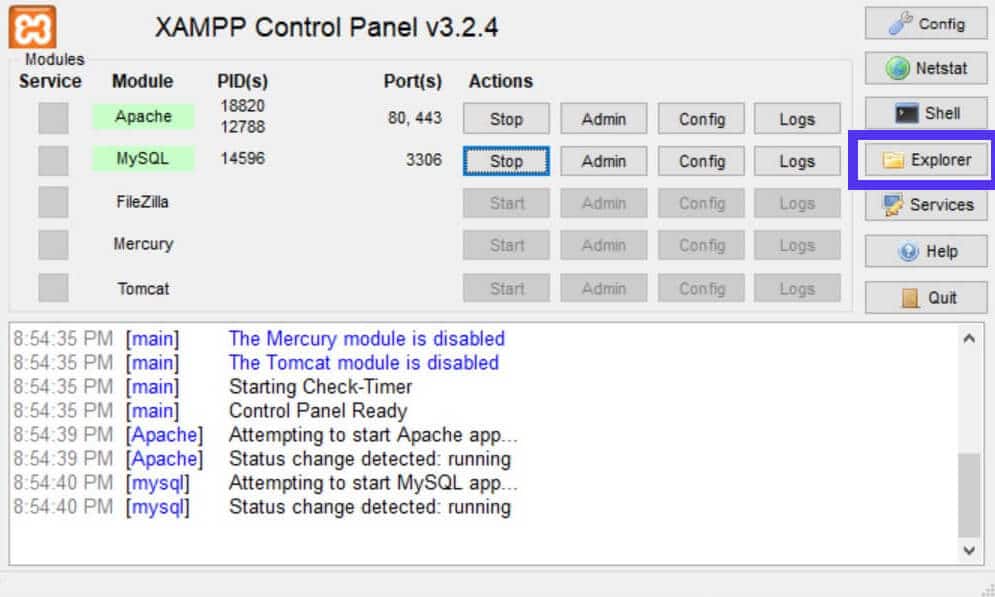
Then navigate to the appropriate directory from the options listed above. When you get there, open the httpd-vhosts.conf file in a text editor.
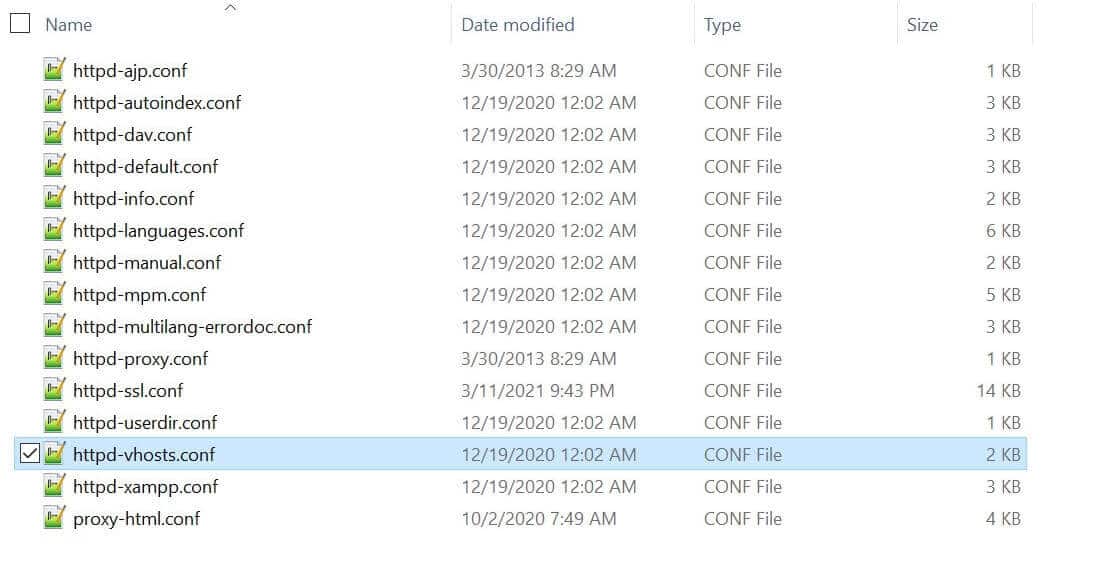
Look at the “VirtualHost” sections. The line you’re looking for is “DocumentRoot”. If the path specified here ends at “htdocs”, that’s the problem. You should change it so that it ends at your project’s folder.
For example, the file may currently look like this:
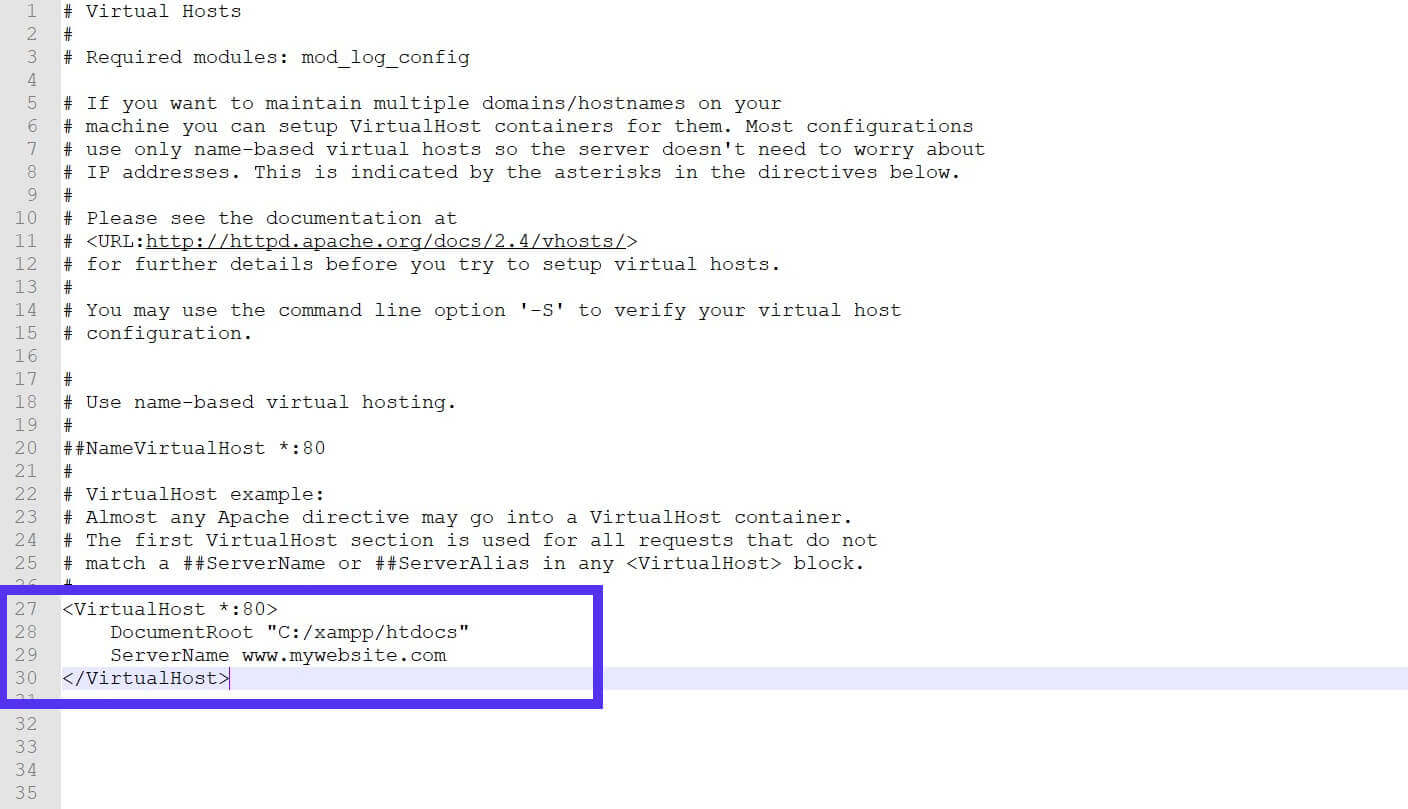
After tweaking it, you’ll have something that looks like this:

The “DocumentRoot” line should end with the folder name of your website as listed in the “htdocs” folder. When you’re finished, save the changes and try to load localhost/xampp/index.php again.
Summary
If you’re unable to access your local site’s index at localhost/xampp/index.php, you’re not alone. This frustrating issue is relatively common, and unfortunately, the error provides little indication of what the problem might be.
Thankfully, it’s also a fairly simple issue to resolve, and you can go about it in two ways:
- Rename the index.php file to index.txt
- Edit the httpd-vhosts.conf file and change the “DocumentRoot” property
To help ensure your live site doesn’t experience any similar issues, consider hosting it with Kinsta. Our application hosting, database hosting, and managed WordPress hosting help keep your site running smoothly while you focus on what matters: providing an outstanding experience for your users.


